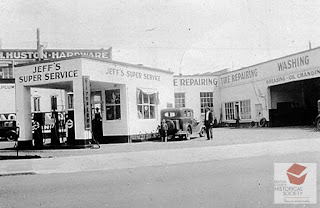During preparations for the Circa 1920 exhibition at the
Benton County Historical Museum, we opened an album of photographs taken by
local resident, Jeff Ayers. Ayers, who was
a sergeant in the U. S. Army, 65th CAC, during World War I.
 |
| Jeff Ayers |
The CAC (Coastal Artillery Corps) operated heavy artillery
(155 mm or larger) and railway artillery (heavy guns mounted on railroad cars
for transportation). Ayers' photographs provide a graphic illustration of what
conditions in the artillery corps during World War I: the kind of tents they lived in and the mud
they endured. And, of course, marching from place to place.
Artillery made rapid advances during the war, becoming
larger and more powerful and with a longer range. Other changes made it quicker to load the
guns so that the shelling was nearly continuous.
One of Ayers' photographs shows a crew preparing for
firing. The 65th CAC used
British and French artillery as American versions had not yet arrived in
France. I'm guessing they are using a British BL 9.2 inch howitzer. If someone can identify it more accurately,
please let us know.
Another photograph shows just how large the shells became.
The British BL9.2 inch howitzer shells weighed 290 pounds; those for the German
305 mm howitzer weighed 858 pounds!
The artillery may have been British but the machine guns the
America artillery (and other) units used were French-made Hotchkiss M1914
machine guns. His gun is pointed up-- is
he shooting at an airplane or merely posing for a picture?
Ayers' album also contains pictures of the grim consequences
of all these weapons but also the happy time when the troops were on their way
home.
After returning to the U.S., this CAC unit returned to
coastal defense at Fort Stevens and pictures from this time are also included
in the Ayers album.
From 1935 to at least 1960, Ayers operated a Texaco service station at
Third and Jefferson in Corvallis.
 |
| Jeff Ayers' Super Service Texaco station, Corvallis, Oregon |








No comments:
Post a Comment